
Overview
The article "10 Strategies to Attract New Customers for DTC Brands" presents authoritative methods for direct-to-consumer (DTC) brands aiming to elevate their customer acquisition efforts. It underscores the critical role of:
- High-velocity conversion rate optimization
- Targeted advertising
- Content marketing
- Social media engagement
These strategies are backed by data-driven insights and compelling case studies that illustrate substantial enhancements in customer engagement and conversion rates.
Introduction
Attracting new customers represents a significant challenge for direct-to-consumer (DTC) brands operating in a highly competitive landscape. By implementing innovative strategies, these companies can enhance their visibility and foster meaningful connections with potential clients. This article delves into ten effective methods that DTC brands can adopt to boost customer acquisition, ranging from high-velocity conversion rate optimization to leveraging targeted advertising and engaging content marketing.
How can brands effectively balance these diverse strategies to create a cohesive approach that resonates with their audience?
Parah Group: Implement High-Velocity Conversion Rate Optimization Strategies
Implementing high-velocity CRO strategies necessitates a comprehensive examination of user behavior through advanced tools like session recordings and heatmaps. These instruments yield invaluable insights into user interactions, illuminating where potential new customers abandon the purchasing process.
Companies can significantly enhance their landing pages by:
- Integrating clear calls-to-action
- Optimizing navigation
Thereby substantially increasing conversion rates. A/B testing is integral to this optimization journey; through experimentation with various headlines, images, and layouts, companies can identify the elements that resonate most with their audience. This data-driven approach not only enhances user experience but also drives sales without incurring additional advertising costs.
Notably, firms that have successfully adopted these strategies have reported remarkable increases in conversion rates, underscoring the necessity for ongoing testing and refinement in the competitive DTC landscape. For instance, a $30M clothing company that partnered with Parah Group experienced a 35% surge in conversion rates after implementing tactics such as:
- Refining product pricing
- Gamifying the progress bar for free shipping limits
Similarly, Grab Green, a $15M cleaning product company, achieved an impressive 73% increase in average order value (AOV) by:
- Testing free shipping thresholds
- Introducing bundles to encourage larger purchases
To further bolster trust and credibility, companies should also weave in trust signals and social proof into their strategies, as evidenced by the successful outcomes of Parah Group's clients. To maximize the effectiveness of these strategies, companies must continuously , especially from new customers, and adapt their approaches based on real-time feedback.
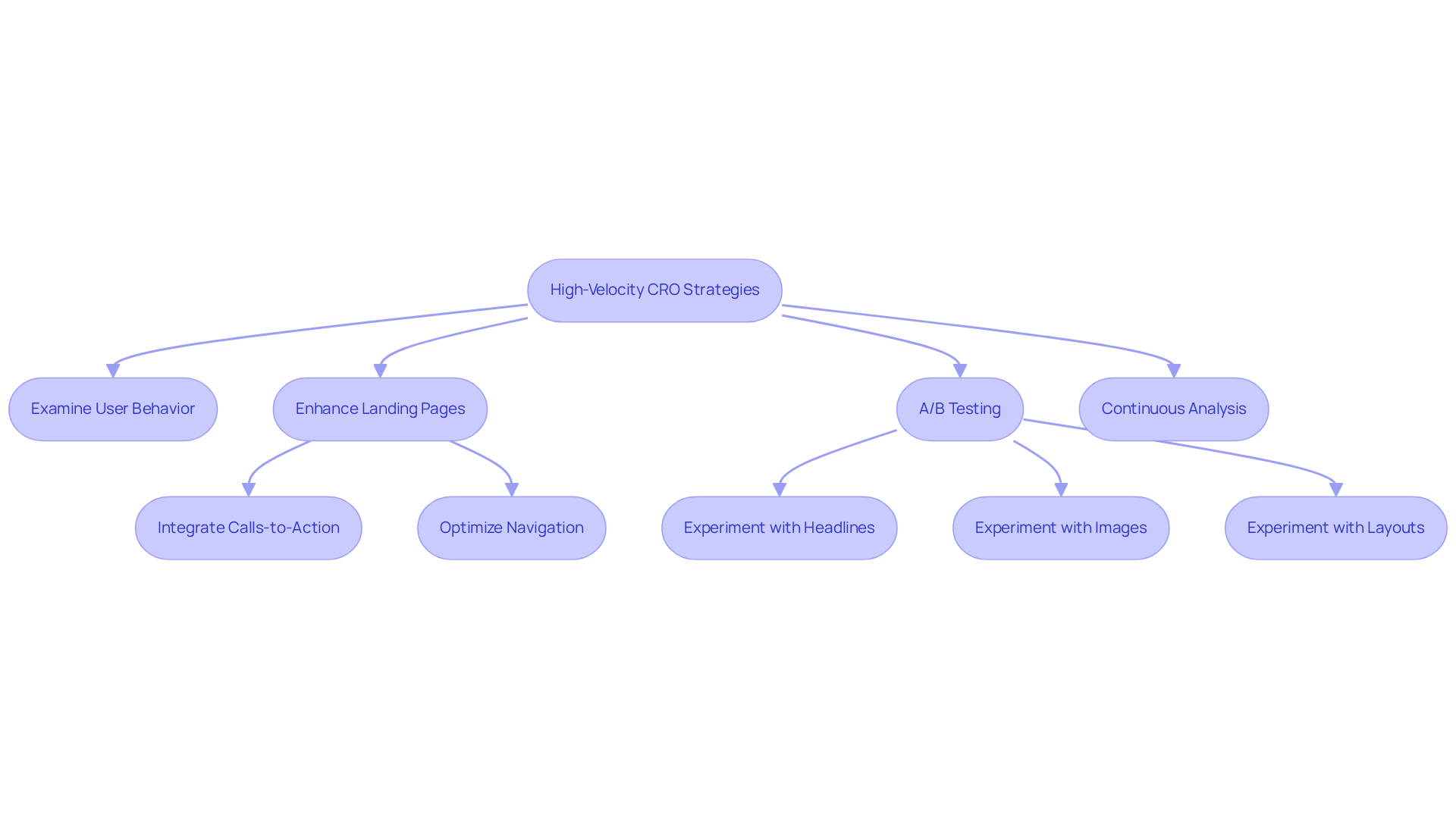
HubSpot: Leverage Content Marketing to Engage New Customers
Content marketing serves as a formidable asset for DTC companies, empowering them to craft informative and engaging blog posts, videos, and infographics that resonate deeply with their target audience. For instance, a DTC skincare company may develop content centered on skincare routines or the benefits of specific ingredients, thereby establishing itself as a trusted authority within the industry. This strategic approach not only attracts new customers but also encourages sharing, significantly enhancing reach and visibility. By implementing SEO best practices—such as optimizing keywords and refining site structure—companies can ensure their content achieves high rankings in search engine results, thereby markedly increasing organic traffic to their websites.
Parah Group has effectively harnessed these principles across several case studies. Notably, a $30M clothing label witnessed a remarkable 35% rise in conversion rates following enhancements made to their homepage and the application of social proof techniques. In a similar vein, a $15M cleaning product label improved their average order value by an impressive 80% through strategic bundling and pricing tests. To maximize the effectiveness of content marketing, DTC companies must continuously analyze and adapt their strategies accordingly, ensuring they remain competitive in an ever-evolving landscape.
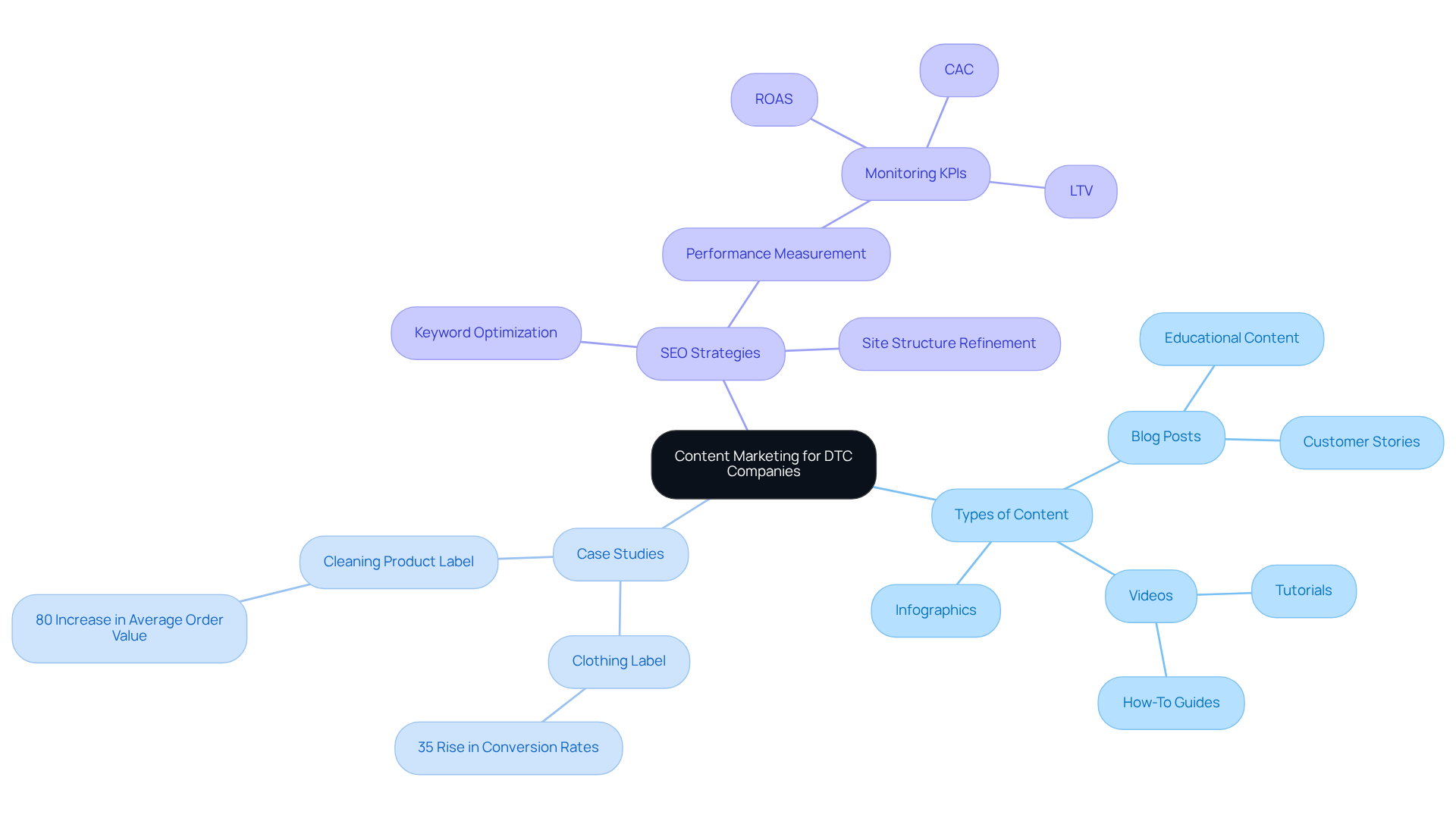
Google Ads: Utilize Targeted Advertising for Customer Acquisition
To leverage effectively, companies must possess a nuanced understanding of their target audience. Campaigns should be meticulously crafted around specific keywords that align with their product offerings. For instance, a DTC fashion label could focus on keywords such as 'sustainable clothing' or 'affordable activewear' to attract eco-conscious consumers. Remarketing approaches are also essential, enabling companies to reconnect with users who previously visited their site without completing a purchase. By tailoring ad text and visuals to resonate with the target audience, companies can significantly enhance their click-through rates and conversion metrics.
Targeted advertising strategies have demonstrated a marked improvement in acquiring new customers, with average click-through rates in e-commerce fluctuating between 2% to 5%, depending on the industry. Parah Group's established methodologies in Conversion Rate Optimization (CRO) further bolster these efforts, as evidenced by their case studies where companies experienced substantial increases in conversion rates, including a 35% rise in conversion rates and a 10% increase in revenue per visitor.
As we approach 2025, the trend towards hyper-targeted advertising will continue to shape the landscape, making it imperative for DTC companies to refine their strategies to meet evolving consumer expectations while employing innovative CRO techniques for sustainable growth. Parah Group distinguishes itself from other CRO agencies by concentrating on profitability and sustainable growth, ensuring that their strategies not only attract new customers but also enhance overall business performance.
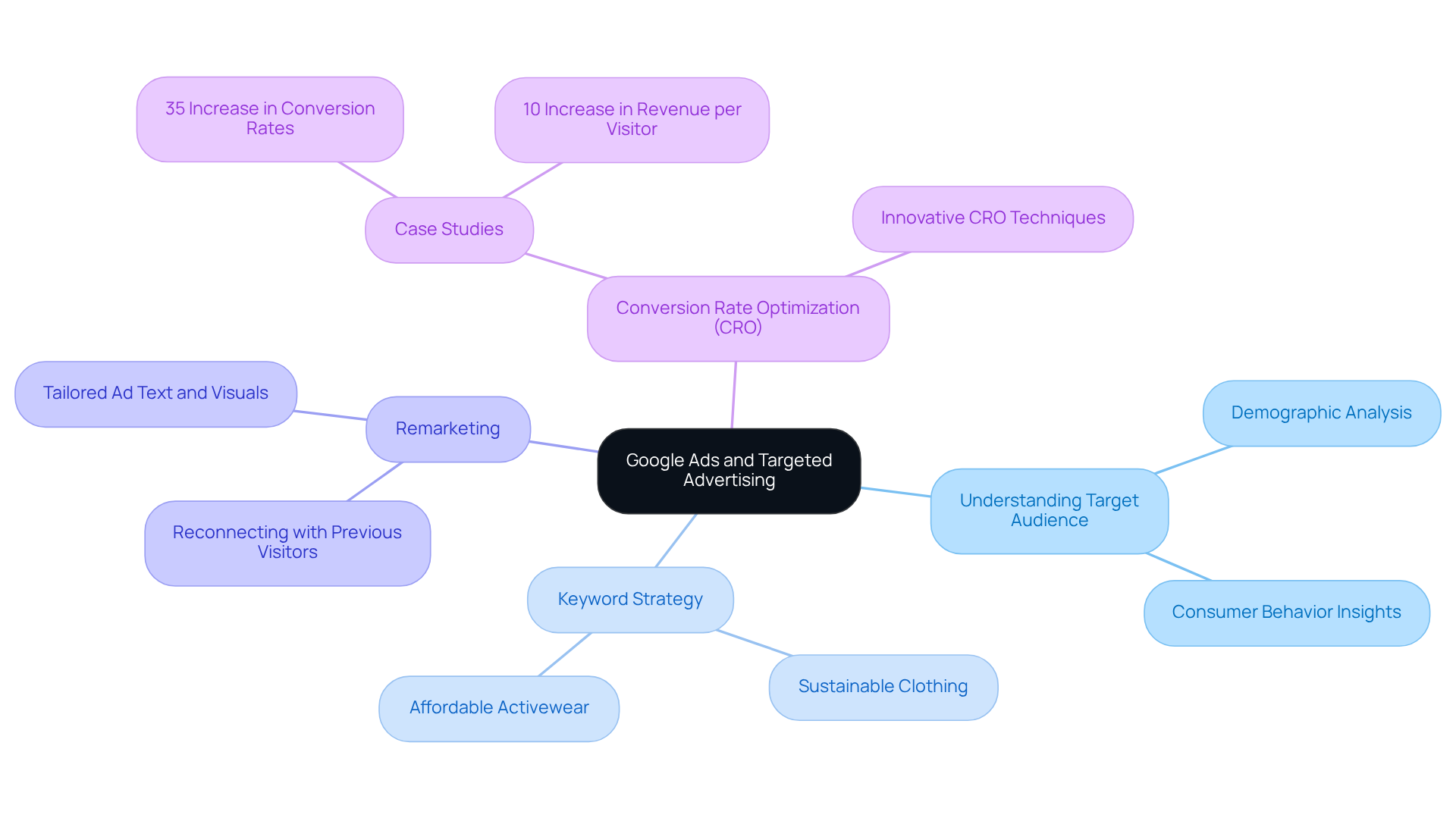
Mailchimp: Nurture Leads with Effective Email Marketing Campaigns
To maximize the effectiveness of , DTC companies must prioritize segmentation and personalization. By classifying leads according to behavior and preferences, companies can provide tailored messages that resonate with each individual.
For instance, a DTC home goods company might send personalized emails showcasing products that reflect a customer's past purchases or browsing history, thereby significantly increasing the likelihood of conversion. Engaging visuals and clear calls-to-action further enhance these campaigns, driving traffic back to the website.
Research indicates that personalized email campaigns can yield conversion rates considerably greater than those of generic messages, with certain companies reporting increases of up to 52% in conversions through dynamic content personalization.
As the email marketing landscape evolves, DTC brands in 2025 will need to employ sophisticated segmentation techniques to foster deeper connections with their audiences, ensuring that their communications are not only relevant but also compelling.
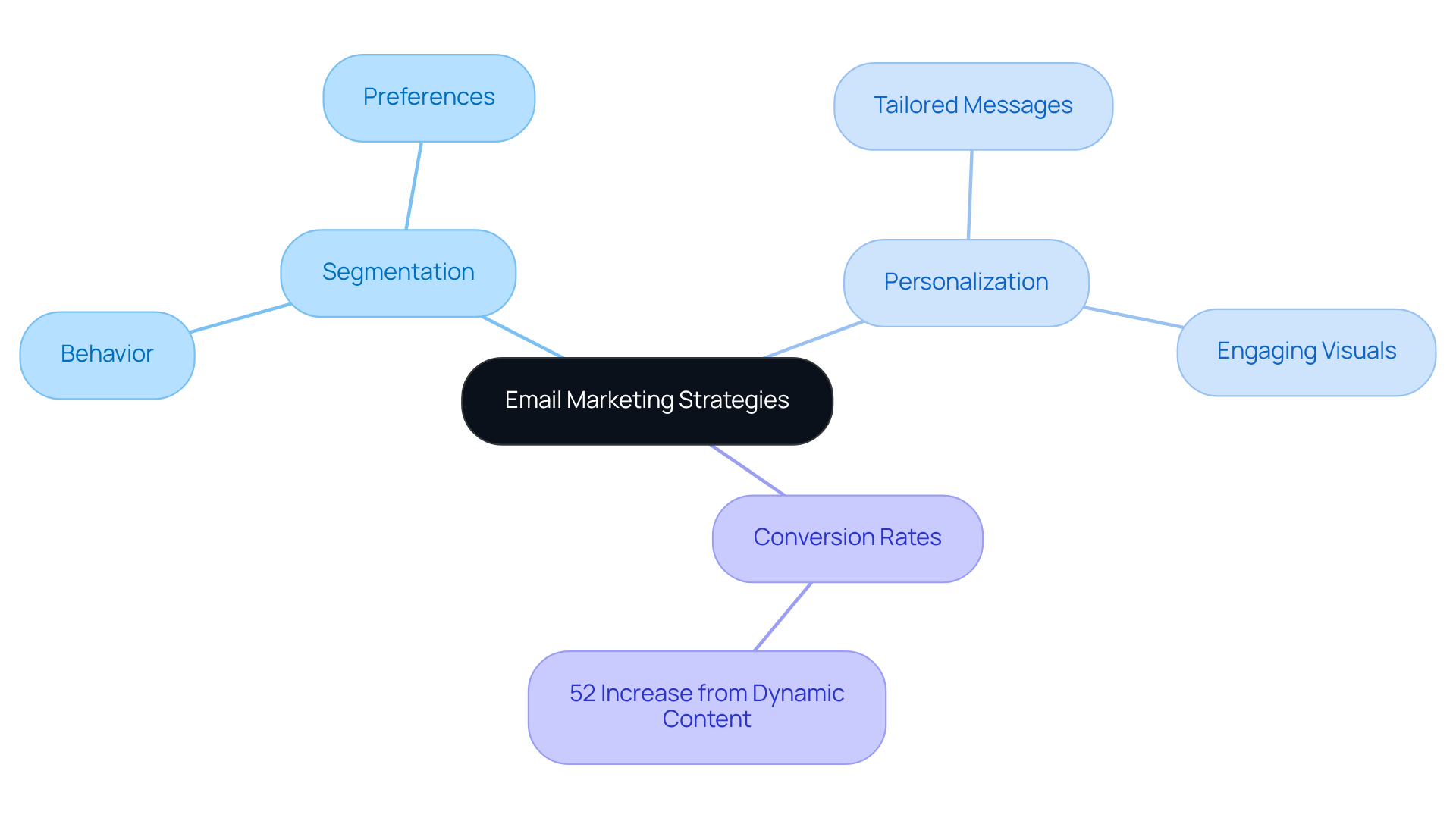
Shopify: Optimize Your E-Commerce Store for Better Customer Experience
To effectively optimize an e-commerce store, it is essential to create a user-friendly and visually appealing website. Key strategies encompass:
- Simplifying navigation
- Ensuring rapid load times
- Providing detailed product descriptions paired with high-quality images
Research indicates that 99% of clients seek reviews when shopping online, making the integration of testimonials vital for building trust and enhancing the shopping experience. Furthermore, implementing features such as streamlined checkout processes can significantly diminish cart abandonment rates, which currently stand at an astonishing 70%.
For example, a direct-to-consumer (DTC) electronics company could enhance user experience by offering a product comparison tool, allowing clients to make informed decisions swiftly. This approach not only aids in reducing cart abandonment but also cultivates confidence in the purchasing process. With mobile commerce projected to represent 59% of total retail e-commerce sales, is paramount. By applying these strategies, DTC companies can substantially improve user experience and drive higher conversion rates in 2025.
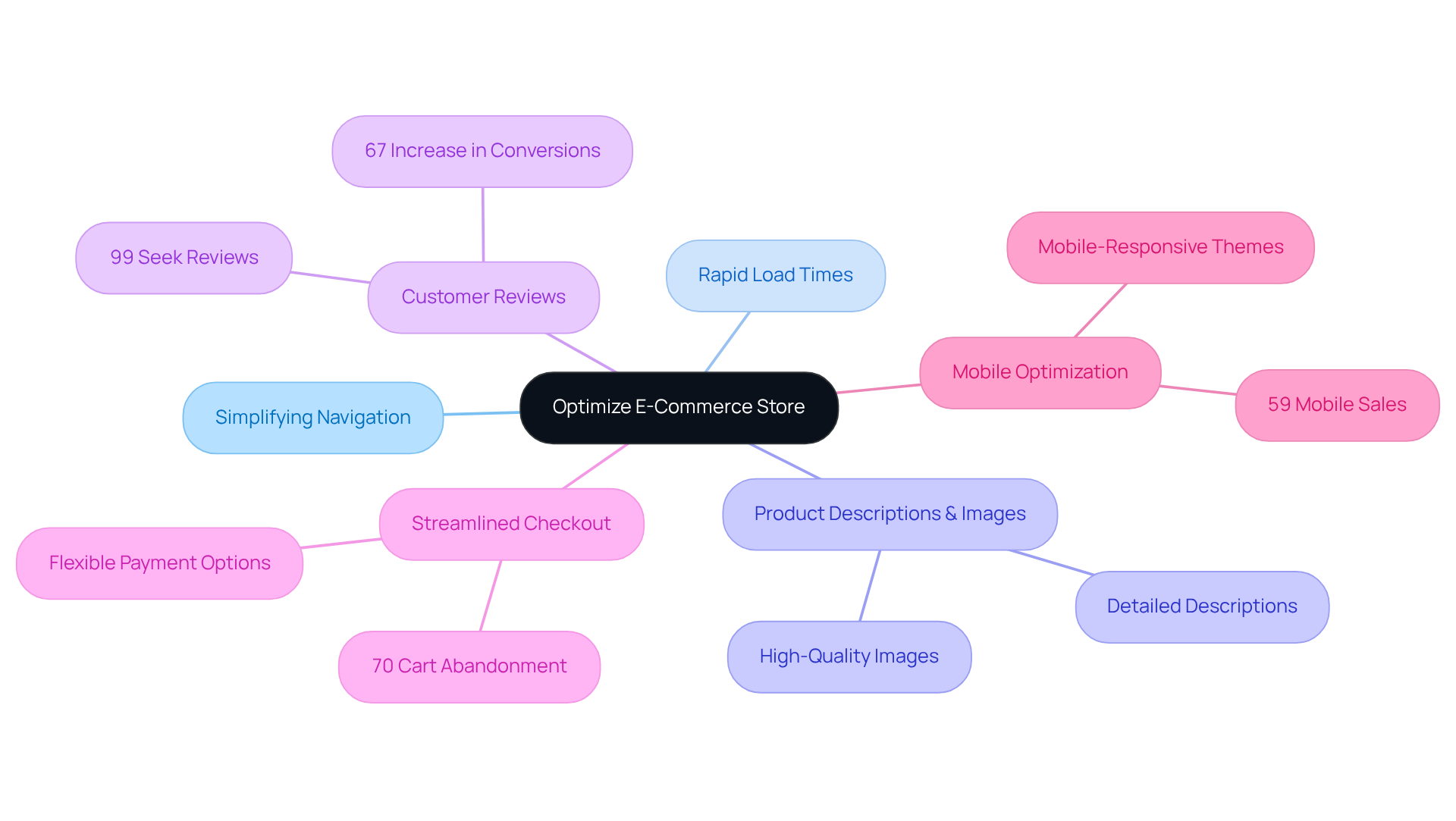
Canva: Create Engaging Visual Content to Attract Customers
Creating engaging visual content is essential for DTC companies aiming to attract new customers. Tools like Canva empower these companies to design for social media, email campaigns, and website banners, streamlining the production of high-quality visuals that resonate with audiences. Notably, 91% of consumers prefer visual content over written content, underscoring the necessity for DTC companies to prioritize their visual strategies.
Consistency in visual identity is paramount; companies must utilize colors and fonts that reflect their unique image. For instance, a DTC beverage company could develop vibrant, shareable graphics to highlight new flavors or promotions, thereby enhancing brand recognition.
Furthermore, incorporating user-generated content (UGC) not only amplifies authenticity but also fosters community engagement, as UGC is 60% more likely to convert compared to branded content. By leveraging these strategies, DTC companies can significantly enhance their visual presence and cultivate stronger connections with their audience.
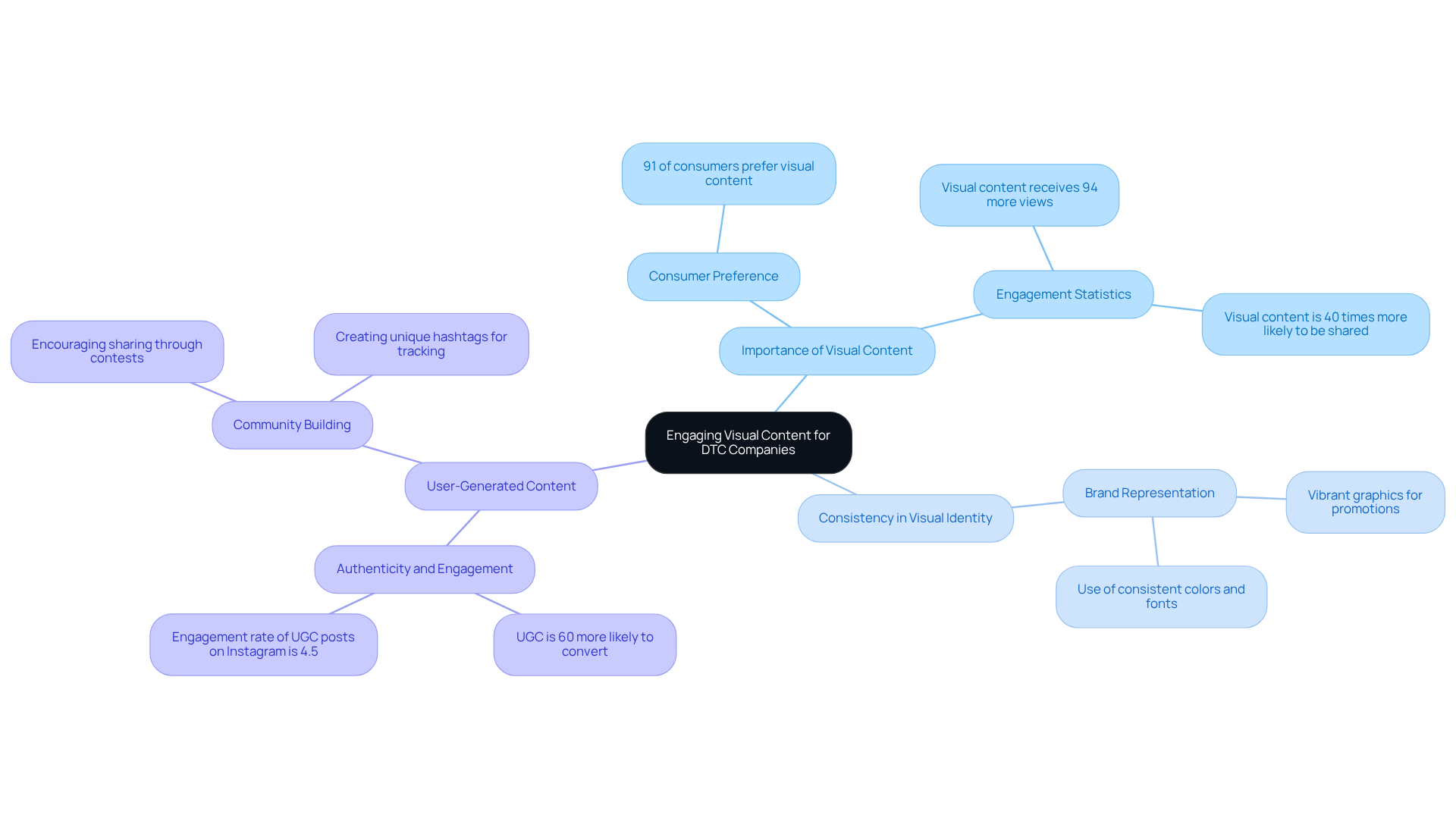
Hootsuite: Manage Social Media to Engage New Audiences
Effectively managing social media necessitates a well-structured content calendar that meticulously outlines posts across various platforms. Engaging with the audience is not merely beneficial; it is essential. Companies must actively respond to comments, share user-generated content, and implement interactive campaigns, such as polls or contests, to foster genuine connections.
For instance, a direct-to-consumer (DTC) fitness company could initiate a challenge on Instagram, encouraging followers to showcase their workout routines. This strategy not only but also enhances visibility as participants share their experiences within their networks. Such interactive initiatives can significantly elevate a company's presence in the competitive e-commerce landscape, fostering community and loyalty among consumers.
By adopting these practices, businesses position themselves as leaders in the digital space, driving both engagement and brand loyalty.
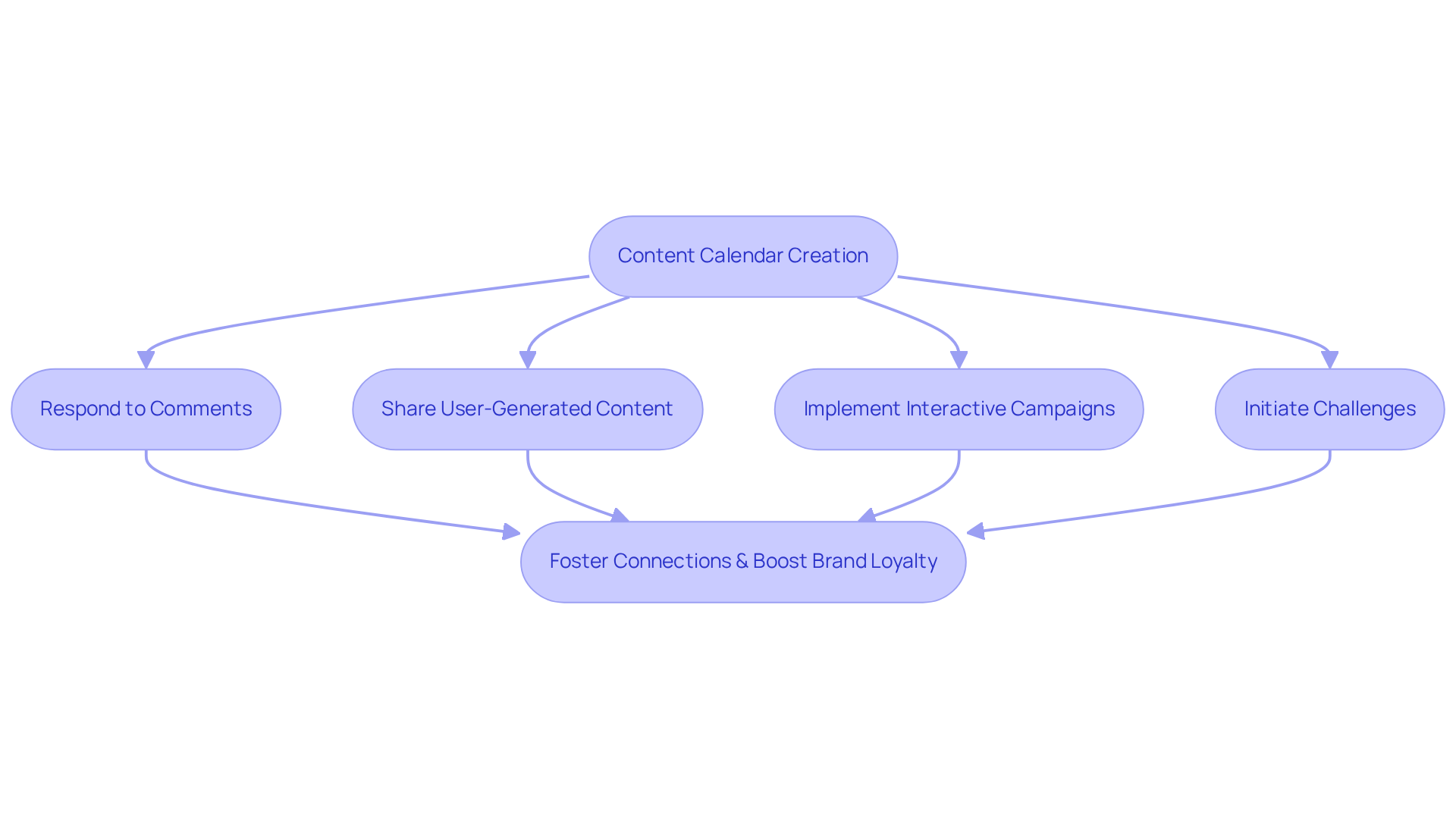
BuzzSumo: Discover Trending Content to Capture Customer Interest
Utilizing tools such as BuzzSumo empowers companies to accurately identify that resonate with their audience. By meticulously analyzing high-performing content within their niche, organizations can create timely and relevant posts that effectively capture attention.
For example, a direct-to-consumer (DTC) beauty company might develop tutorials or blog posts centered on trending skincare ingredients, thereby establishing itself as a thought leader in the industry. This strategic approach not only attracts new customers but also fosters shares and backlinks, significantly enhancing SEO performance.
As consumer preferences evolve, the necessity for timely content development becomes paramount for DTC companies aiming to engage potential clients and attract new customers.

SurveyMonkey: Gather Customer Insights to Enhance Acquisition Strategies
Gathering client insights through surveys is essential for understanding preferences, pain points, and purchasing behaviors. Direct-to-consumer (DTC) companies must prioritize the development of concise and engaging surveys, potentially offering incentives to enhance participation. For example, a DTC food company could inquire about consumers' favorite flavors or preferred packaging styles. By analyzing this feedback, companies can refine their product offerings and marketing strategies, leading to improved acquisition efforts for new customers.
Effective survey design is paramount; experts indicate that shorter surveys tend to yield higher response rates, with optimal engagement occurring when questions are straightforward and relevant. In 2025, as competition intensifies, will be vital for DTC companies aiming to maintain a competitive edge in the market.
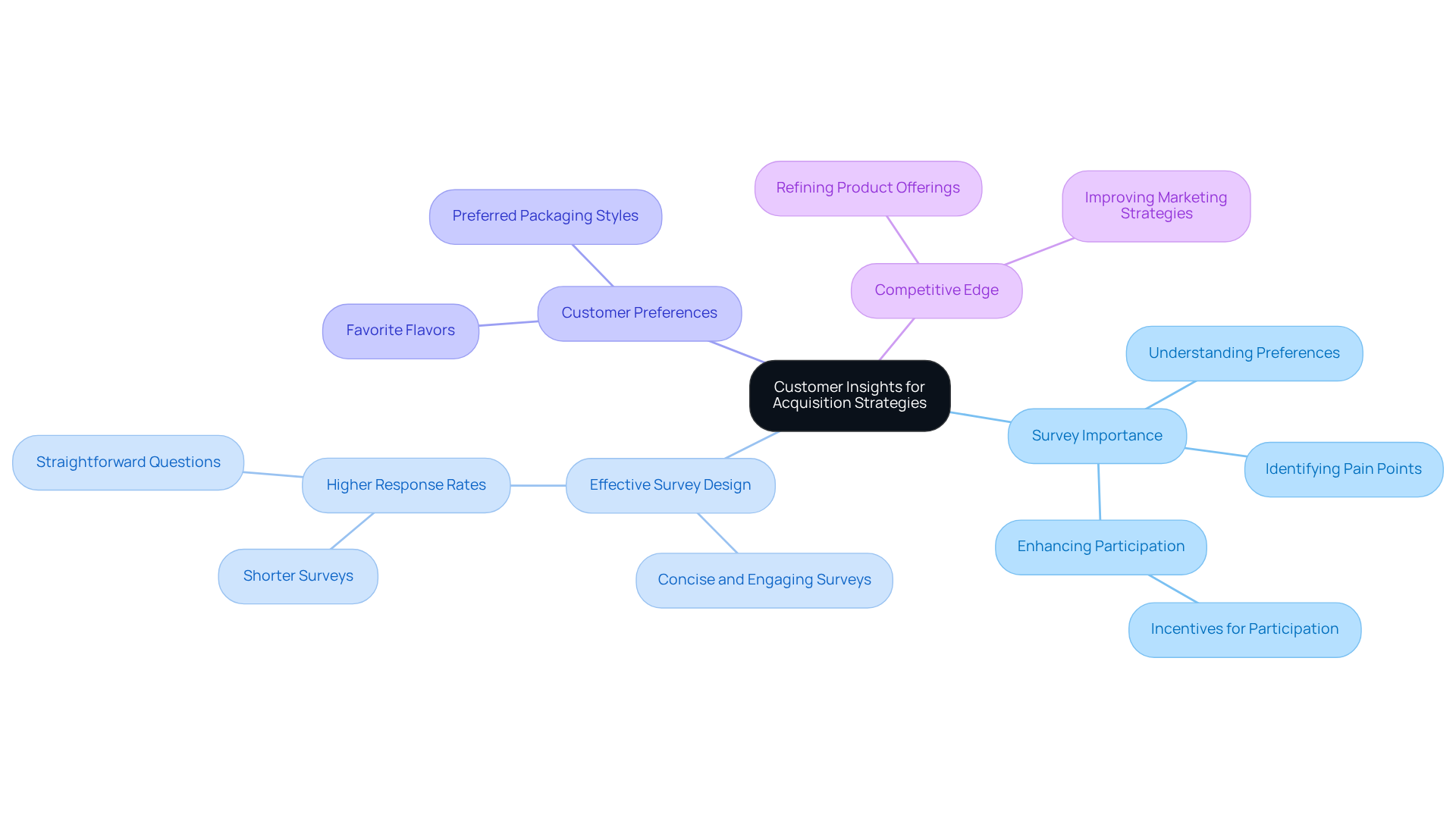
Facebook Ads: Target Specific Demographics for Effective Customer Acquisition
To maximize the effectiveness of Facebook Ads, DTC companies must leverage the platform's robust . Segmenting audiences based on interests, behaviors, and demographic data allows companies to tailor their ads to resonate with specific groups. For instance, a DTC clothing label might concentrate on users passionate about sustainable fashion, ensuring that their messaging aligns with the values of their target audience. Engaging visuals, paired with compelling ad copy, are crucial for enhancing click-through rates and conversions, ultimately driving acquisition of new customers.
Experts in digital advertising underscore the importance of audience segmentation. Effective demographic targeting can significantly enhance ad performance in e-commerce, with companies reporting notable increases in conversion rates. By continuously testing and refining their targeting strategies, DTC brands can optimize their campaigns for better results and sustainable growth. As Michelle Morgan, Co-Founder of Paid Media Pros, states, "Test, analyze, roll with what works best, and always stay open to new possibilities.
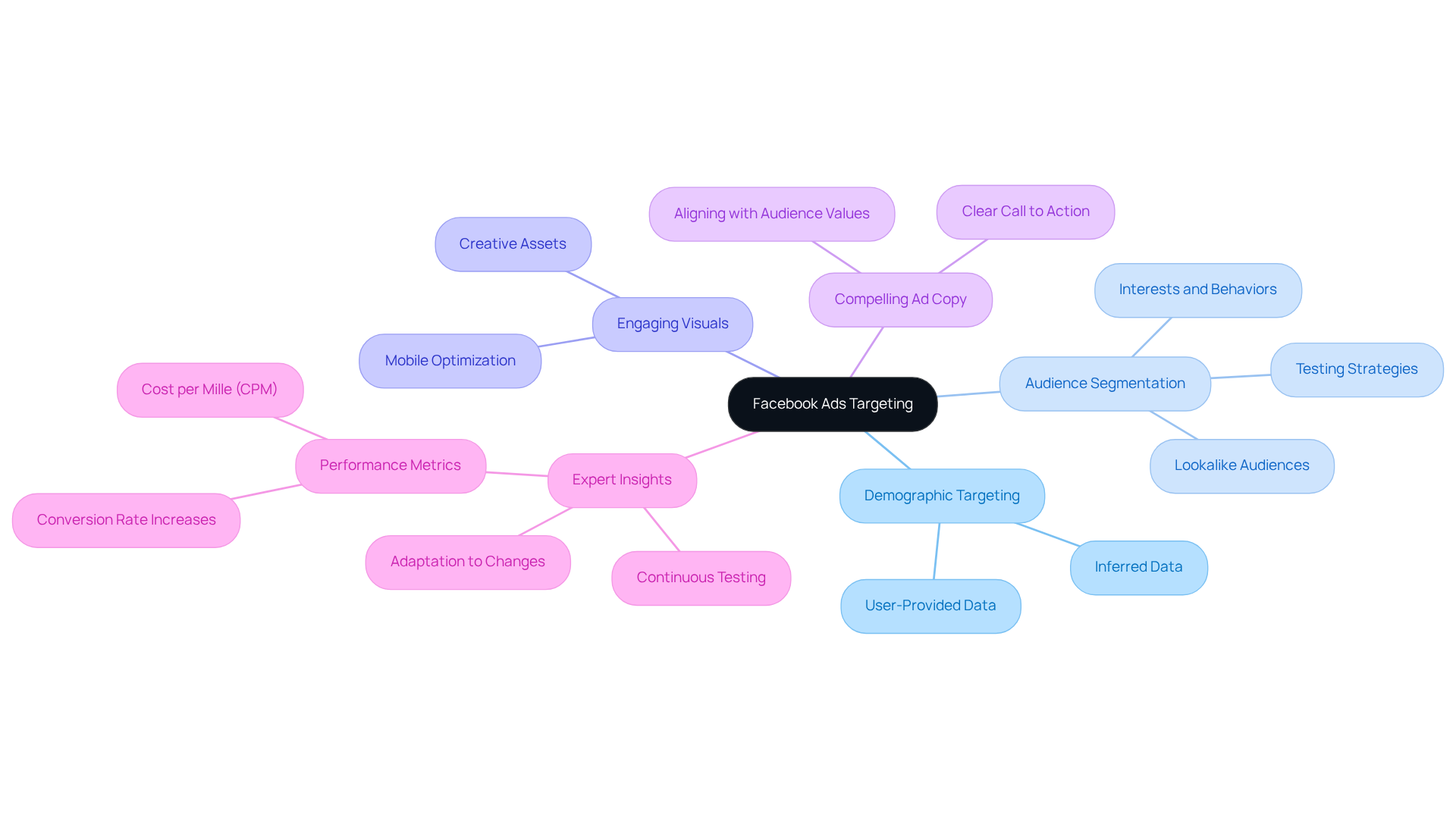
Conclusion
Attracting new customers for direct-to-consumer (DTC) brands necessitates a multifaceted approach that effectively leverages various strategies and tools. Implementing high-velocity conversion rate optimization, effective content marketing, targeted advertising, and engaging visual content can significantly enhance customer acquisition efforts. By concentrating on user behavior analysis, personalized messaging, and leveraging social media, brands can forge meaningful connections with potential customers, ultimately driving growth and profitability.
Key strategies include:
- Optimizing landing pages for improved conversion rates
- Utilizing Google Ads for precise targeting
- Nurturing leads through personalized email campaigns
Furthermore, the significance of gathering customer insights through surveys and employing effective social media management is underscored. These tactics not only attract new customers but also cultivate brand loyalty and trust, which are essential in the competitive DTC landscape.
As the market evolves, DTC brands must remain agile, continually analyzing data and refining their strategies to align with changing consumer expectations. Embracing these best practices and staying ahead of trends will enable companies to enhance their customer acquisition efforts and achieve sustainable growth. The time to implement these strategies is now; the potential for increased engagement and conversion is within reach for those willing to innovate and adapt.
Frequently Asked Questions
What are high-velocity conversion rate optimization (CRO) strategies?
High-velocity CRO strategies involve examining user behavior through tools like session recordings and heatmaps to gain insights into user interactions and identify where potential customers abandon the purchasing process.
How can companies enhance their landing pages?
Companies can enhance their landing pages by integrating clear calls-to-action and optimizing navigation, which can significantly increase conversion rates.
What role does A/B testing play in conversion optimization?
A/B testing allows companies to experiment with different headlines, images, and layouts to identify which elements resonate most with their audience, ultimately enhancing user experience and driving sales without additional advertising costs.
Can you provide examples of companies that have successfully implemented these strategies?
Yes, a $30M clothing company experienced a 35% increase in conversion rates after refining product pricing and gamifying the progress bar for free shipping limits. Additionally, Grab Green, a $15M cleaning product company, achieved a 73% increase in average order value by testing free shipping thresholds and introducing bundles.
How can companies build trust and credibility with customers?
Companies can build trust and credibility by incorporating trust signals and social proof into their strategies, which has proven effective for clients of Parah Group.
What is the importance of continuous analysis in CRO?
Continuous analysis of user data, especially from new customers, is crucial for adapting strategies based on real-time feedback, ensuring ongoing effectiveness in conversion optimization.
How does content marketing benefit DTC companies?
Content marketing allows DTC companies to create informative and engaging content that resonates with their target audience, establishing them as trusted authorities and attracting new customers.
What SEO practices should companies implement for content marketing?
Companies should optimize keywords and refine site structure to achieve high rankings in search engine results, which can significantly increase organic traffic to their websites.
What are effective strategies for using Google Ads?
Effective Google Ads strategies include understanding the target audience, crafting campaigns around specific keywords, and employing remarketing to reconnect with users who did not complete a purchase.
What is the trend in advertising as we approach 2025?
The trend is moving towards hyper-targeted advertising, making it essential for DTC companies to refine their strategies to meet evolving consumer expectations while using innovative CRO techniques for sustainable growth.
FAQs











